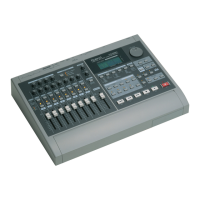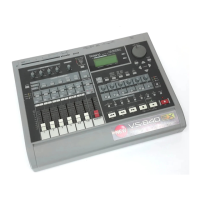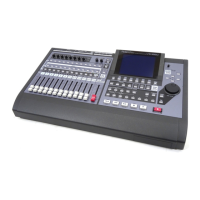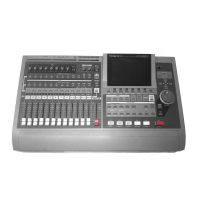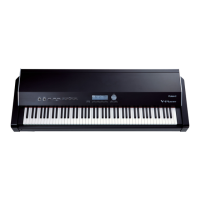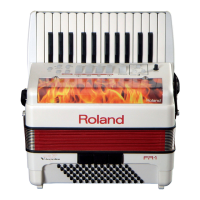24
VS-880EX Application Guide
Remember, each mixer (INPUT Mode, TRACK Mode, and RETURN Mode) retains its own settings
when you switch to the other (using the [FADER/EDIT] button). The fader level, pan position, and
EQ settings that you set up in INPUT Mode are memorized by the VS-880EX. So, when you switch
to TRACK Mode and adjust the fader for channel 1 (for example), the level of Input 1 in INPUT
Mode is not affected.
Mixer Effect Routing
The internal effects can be placed in the audio signal path at any one of three locations.
1. PRE-FADER: The input to the effect is selected from the signal path before the fader. This
means that the fader will have no control over the volume of the audio entering the effect.
The stereo output from the effect is assignable to the MIX bus or the REC (recorder) buses.
2. POST-FADER: The input to the effect is selected from the signal path after the fader. This
means that the fader will control the volume of the audio signal entering the effect. The
stereo output from the effect is assignable to the MIX bus or the REC (recorder) buses.
3. INSERT: The audio signal is routed directly through the effect. In other words, you will only
hear the “effected” signal because the “dry” signal no longer exists. There are four Insert
Effect options: Insert (mono in/mono out), Insert L (processed through the left side of a
stereo effect), Insert R (processed through the right side of a stereo effect), and Insert S
(mono in through the left side of a stereo effect, then in through the right side of the same
stereo effect in series).
When working with the Preset Patch List in the VS-880EX Appendices, Patches listed as “Snd/Rtn”
are best used as Pre Fader or Post Fader. They are intended to be used as if they were on a mixer
“effect loop.”
Now Time
Now Time indicates the exact location in your song where the VS-880EX is stopped or playing. It is indicated by
the vertical black line in the center of the LCD display. You might think of this “now line” as the playback head
of a traditional tape recorder. The audio passes under it as it plays. For a look at how the Now Time is used in
editing, see the graphic for ‘Finding Your Edit Points’ on Application Guide page 24.
CONDITION MARKER#
MASTER
INPUT TRACK
AUX
TIMETIME
48
24
4
0
dB
12
***
5
INT
156
1+
---
069
Play List ***
Insert Insert L Insert R Insert S

